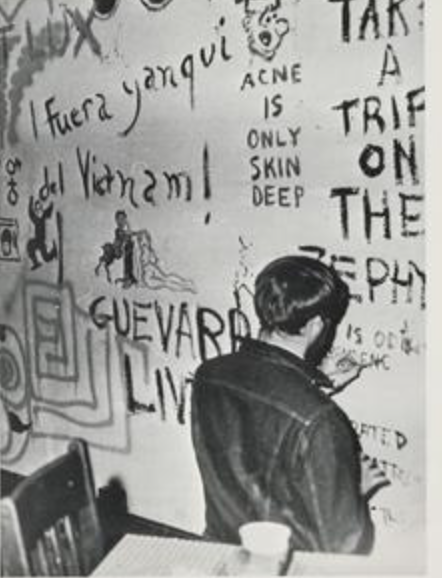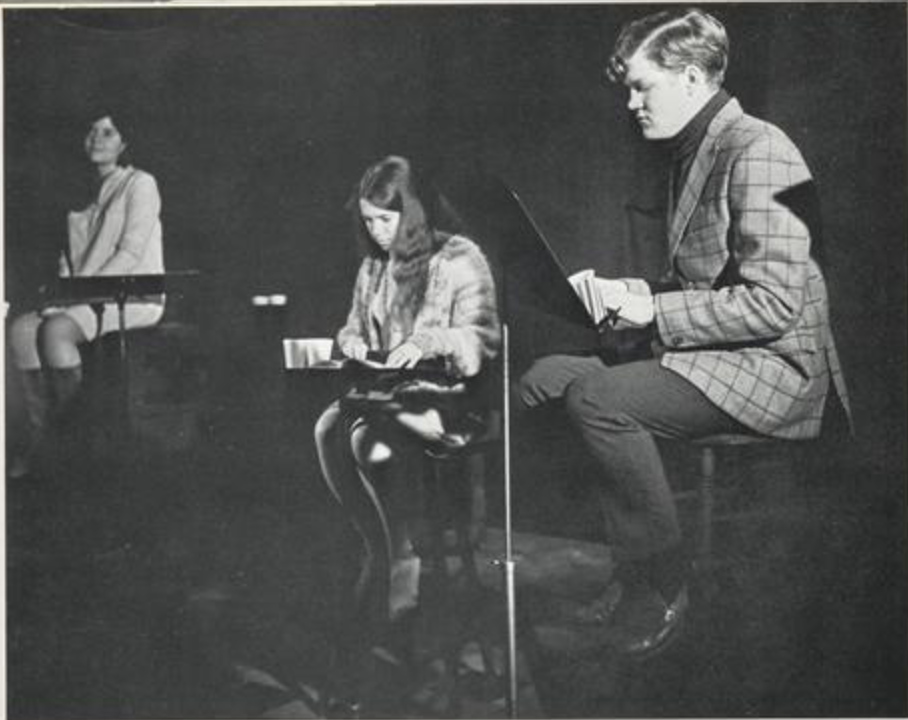“On Friday, February 11, 1966, ‛the babbel,’ Williams’ answer to a Greenwich Village espresso house, opened to a large and enthusiastic clientele…in the basement of Brainerd Mears House.”
— Williams Record, Feb 15, 1966
Brainerd Mears had formerly been the ϴΔX Fraternity House, and the babbel was part of an effort symbolically to re-purpose the party room into an informal artistic showcase for the entire college. Created by Jack Shindler, the coffee house was dedicated to “loafing, punting and conversation every Friday night” (WR). As part of the pre-opening festivities, Shindler held a “graffiti night” where attendees were given paint and brushes and asked to add “artwork” to the walls.
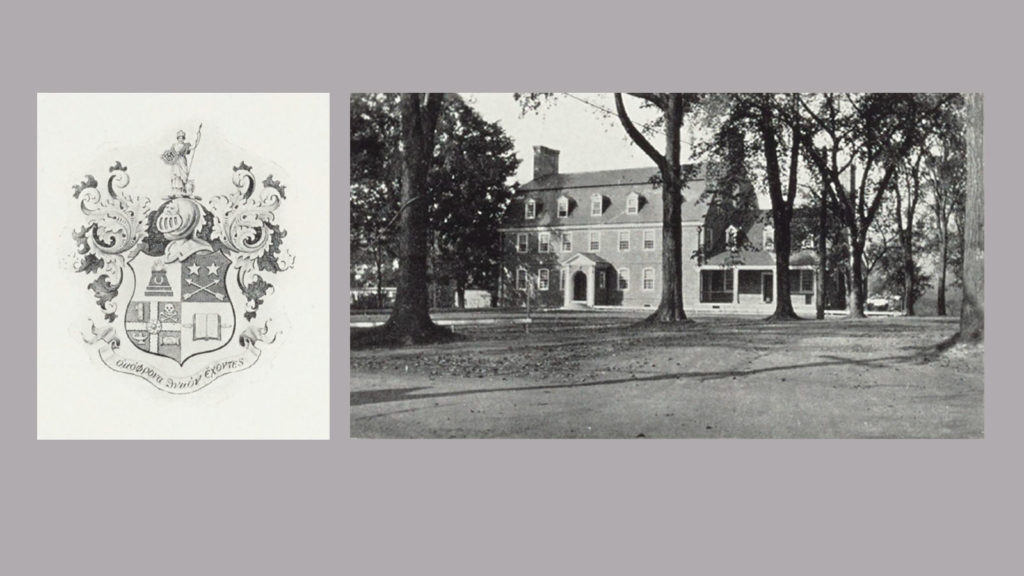
Theta Delta Chi => Brainerd Mears
The authenticity of the babbel was symbolized by the tambourine into which visitors were encouraged to make contributions. The babbel also had a real fire place. Entering each Friday night, patrons could hear a recording of Arlo Guthrie singing, “You can get anything you want……….” Perhaps taking a culinary cue from Arlo, by the beginning of its third season, Shindler had expanded the menu of the coffee house “to include three types of coffee, six varieties of tea, hot cider and fresh doughnuts.”
Sponsored by the Student Union Committee and the Williams College Chapel Board, the babbel’s name was meant to be a playful variation on the Tower of Babel in Genesis 11:1, where babbel (or Biblical “confusion of tongues”) is transformed into a pun for coffeehouse “chatter.” Throughout its years of operation, the babbel hosted numerous student musicians and poets. On that February 11 opening night, the club featured Tim Coulter ’66 and Pete Lineberger ’69 singing and playing guitar and banjo. B. Goolrick ’68 and Pete Ross ’68 played bluegrass, blues and jug band numbers. That first evening also featured Barbara Keith, from Vassar, who sang her own folk songs, as well as music by Collins, Baez and Dylan.
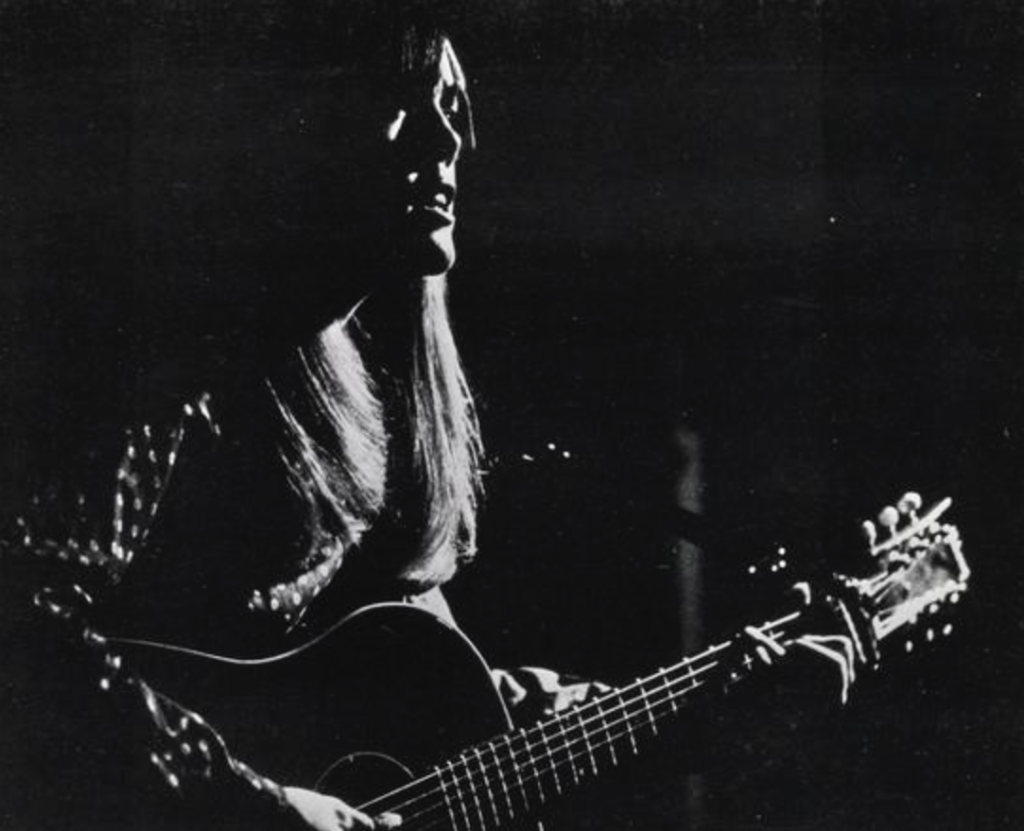
Barbara Keith singing at the babbel
After graduation, she went on to make her own recordings. Here’s a link to her song “The Bramble and the Rose.”
Later on that first evening a student jazz quartet played. Though he didn’t play on that first evening, Mike Mustille ’68 also appeared at the babbel, playing folk-blues guitar.
As the seasons progressed, there was also a production of Dylan Thomas’ Under Milkwood, directed by Dan Wedge ‘70. Among others, it featured Doug Tueting ‘68 and Scott Fields ‘68.
A reading of Dylan Thomas’ Under Milkwood
Wedge also produced a reading of Leroi Jones’ play The Dutchman at the babble. When the Williams literary magazine The Red Balloon was published, its student authors including Scott Fields, Sandy Caskey, David Earle, Tom Stevens, Lloyd Thomas, D.B. Coplan, Bill Carney, John Love, Ryland Jordan and Marti Lafferty read excerpts from their newly published works.
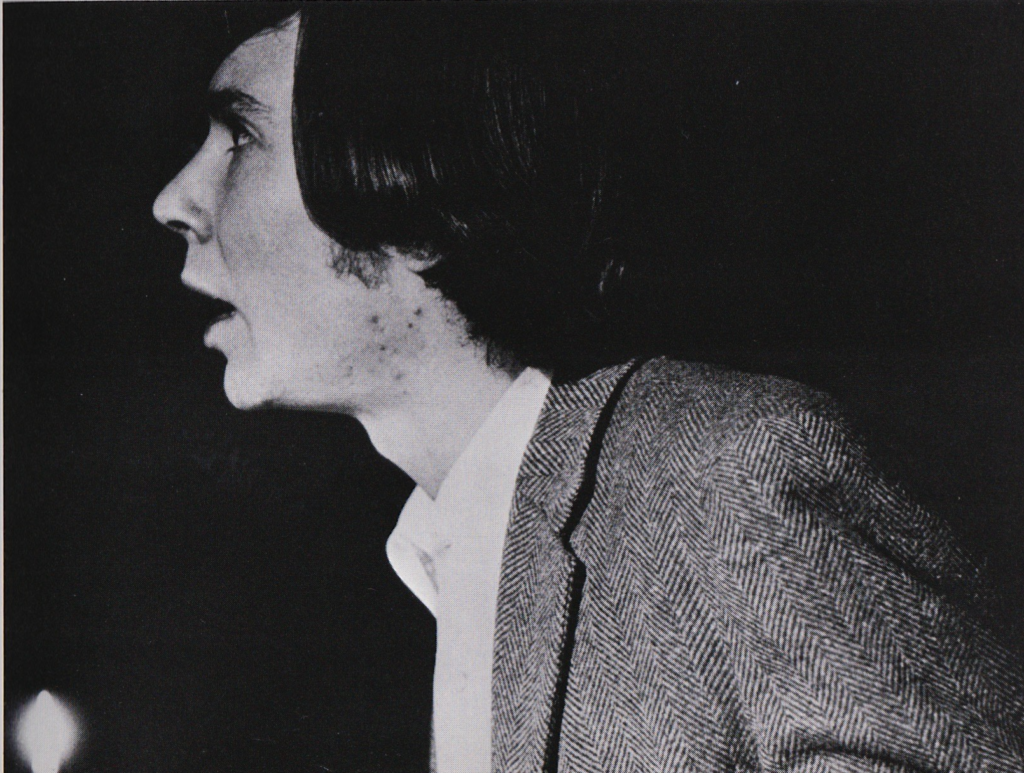
Scott Fields reads from his poetry
Thanks to Jack Shindler’s hard work running the coffeehouse, the babbel provided Williams students, both as an audience and as performers, with enjoyment and edification, an opportunity to see and be seen, a chance to listen to what was going on and a means to help contribute to the artistic environment of the college.

